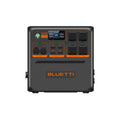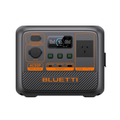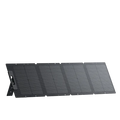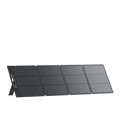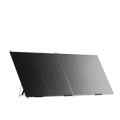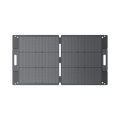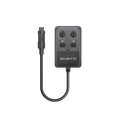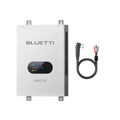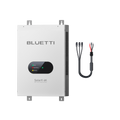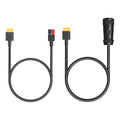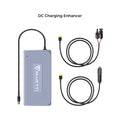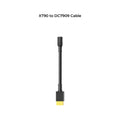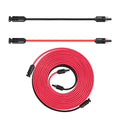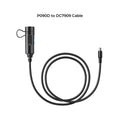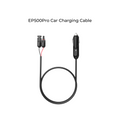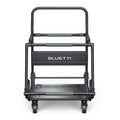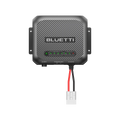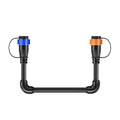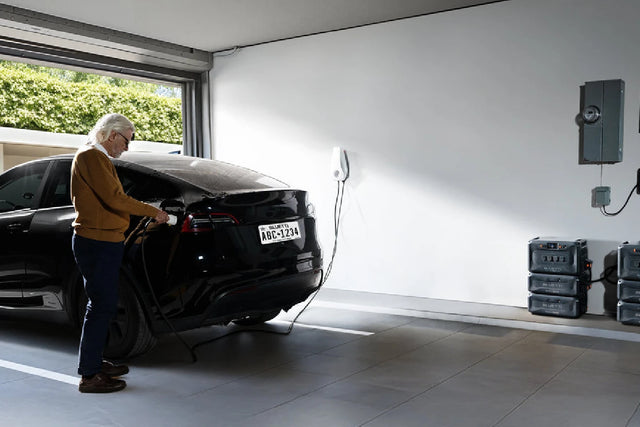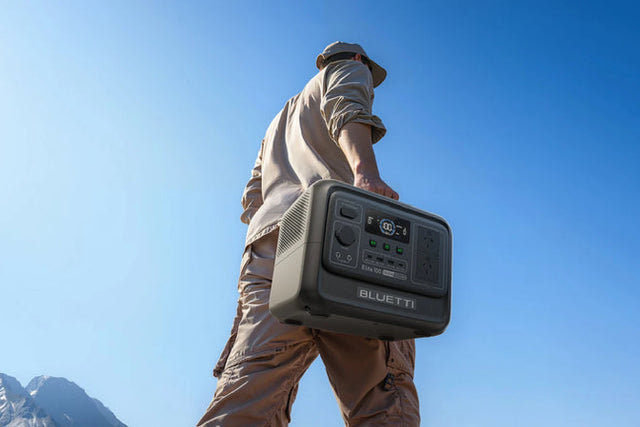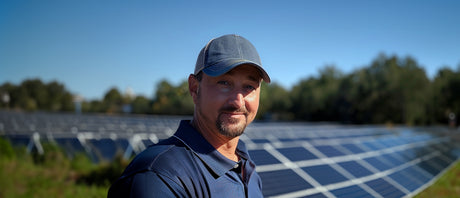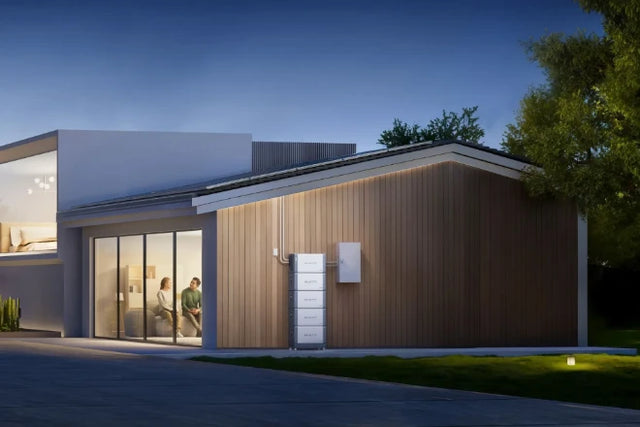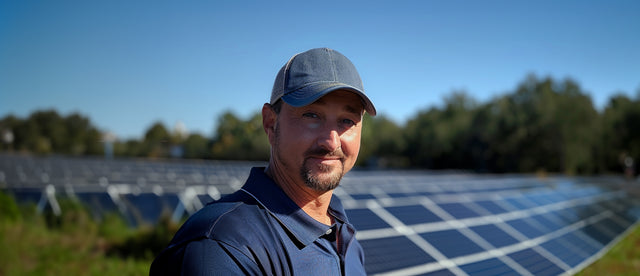The Current Solar Feed-In Tariff in Victoria
Currently, the standard FiT in Victoria is set at 10.2 cents per kilowatt-hour (kWh) for households and businesses with solar panel systems up to 100 kilowatts (kW). This rate is determined by the Essential Services Commission and is reviewed every six months. However, not all retailers offer the same FiT, and some may offer additional incentives or variations to this standard rate.
Electricity Rates and Solar Feed-in Tariff In Victoria
| Electricity Usage | Unit | GST Incl. | Amount Not Subject to GST |
|---|---|---|---|
| General Usage | c/kWh | 41.591000 | |
| Feed-in Tariff | c/kWh | 18.000000 | |
| Supply Charge | c/day | 192.753000 |
| Electricity Usage | Unit | GST Incl. | Amount Not Subject to GST |
|---|---|---|---|
| General Usage | c/kWh | 32.920000 | |
| Feed-in Tariff | c/kWh | 4.900000 | |
| Supply Charge | c/day | 130.020000 |
Top 3 Energy Providers by Plans and Feed-in Tariff Rates
| Position | Provider | Plan Name | Solar Feed-In Tariff (c/kWh) | Energy Rates (c/kWh) | Exit Fee | Additional Notes |
|---|---|---|---|---|---|---|
| 1 | Energy Australia | Solar Plus Plan | 12.50 | 32.00 | No | Higher FiT for customers with larger solar systems. |
| 2 | AGL | Solar Savers | 10.20 | 30.50 | No | Additional discounts for using AGL app for energy management. |
| 3 | Origin Energy | Solar Boost Plan | 11.00 | 31.80 | No | FiT applies only if you purchase solar systems through Origin. |
The Best Solar Feed-In Tariffs in Victoria
After thorough research and comparison, the following are considered the best solar feed-in tariffs in Victoria:
1. Diamond Energy FiT+Diamond Energy offers the highest FiT in Victoria at 18.5 cents per kWh. This is significantly higher than the standard rate and is offered to customers who sign up to their FiT+ plan, which includes a fixed daily supply charge and a variable rate for electricity consumption. This plan also has no lock-in contracts, providing flexibility for customers to switch to a better deal if it arises.
2. PowerShop FiT SaverPowerShop is known for its innovative approach to energy retail and its commitment to renewable energy. They offer a FiT Saver plan, which provides a FiT of 17.8 cents per kWh. This plan also includes a fixed daily supply charge and a variable rate for electricity consumption, with no lock-in contracts.
3. AGL Solar SaversAGL is one of the largest energy retailers in Australia and offers a competitive FiT of 17 cents per kWh through their Solar Savers plan. This plan includes a fixed daily supply charge and a variable rate for electricity consumption, with no lock-in contracts. AGL also offers additional discounts for customers who sign up for both gas and electricity with them.
Solar Feed-in Tariffs in Victoria by Electricity Retailer
| Retailer | State | Min Solar FIT(c/kWh) | Max Solar FIT(c/kWh) | Notable Conditions |
|---|---|---|---|---|
| AGL | VIC | 4.9 c | 15.0 c | System size 10kW max |
| Origin Energy | VIC | 4.9 c | 12.0 c | Only if buy solar through Origin – 10kW max |
| EnergyAustralia | VIC | 5.4 c | 12.0 c | N/A |
| Simply Energy | VIC | 4.9 c | 11.0 c | N/A |
| 1st Energy | VIC | 4.9 c | 9.9 c | N/A |
| OVO Energy | VIC | 4.9 c | 8.0 c | N/A |
| Indigo Power | VIC | 7.2 c | 7.2 c | N/A |
| Red Energy | VIC | 4.9 c | 7.0 c | N/A |
| Arcline by RACV | VIC | 6.0 c | 6.0 c | N/A |
| Lumo Energy | VIC | 4.9 c | 5.5 c | N/A |
| Momentum Energy | VIC | 4.9 c | 5.4 c | System size 10kW max |
| Sumo | VIC | 4.9 c | 5.2 c | N/A |
| Pacific Blue | VIC | 4.9 c | 5.2 c | N/A |
Factors to Consider When Choosing a Solar Feed-In Tariff
While a high FiT may seem attractive, there are other factors to consider when choosing the best solar feed-in tariff in Victoria. These include:
1. Additional Discounts and Incentives
Some retailers offer additional discounts or incentives for customers who sign up for certain plans or bundle their energy services. These discounts can significantly affect the overall savings on electricity bills.
2. Solar Export Limit and Time-of-Use Tariffs
Some retailers may impose a limit on the amount of solar energy that can be exported back to the grid, which can impact the savings on electricity bills. Additionally, some retailers may offer time-of-use tariffs, where the FiT varies depending on the time of day the solar energy is exported.
3. Customer Service and Reputation
The quality of customer service and the reputation of the retailer should also be considered when choosing a solar feed-in tariff. This ensures a smooth and reliable experience in managing your solar panel system and electricity account.
While there are various factors to consider, the best solar feed-in tariff for Victoria ultimately depends on individual energy usage and preferences. It is recommended to compare and research different retailers before making a decision. With the right plan, you can maximize the benefits of solar energy and contribute to a sustainable future.

A Single Rate or Time Varying Rate: Finding the Best Solar Feed-In Tariff for Victoria
The state of Victoria in Australia has been a leader in promoting renewable energy, with a goal of generating 50% of its electricity from renewable sources by 2030. As a part of this push towards sustainability, the Victorian government has implemented a solar feed-in tariff program, which provides financial incentives for households and businesses to generate their own solar energy and sell it back to the grid. However, with several different feed-in tariff options available, the question arises - what is the best solar feed-in tariff for Victoria? Should one opt for a single rate or a time varying rate? In this article, we will explore the differences between these two options and help you decide which one is the most beneficial for you.
Understanding Solar Feed-In Tariffs
Before we delve into the debate between a single rate and a time varying rate, let us first understand what a feed-in tariff is. A feed-in tariff is a payment made to households or businesses for the excess solar energy they generate and feed into the grid. The government sets a rate at which this energy will be bought from the consumers, giving them an opportunity to earn money while also promoting renewable energy. In Victoria, this rate is determined by the Essential Services Commission (ESC), and it varies depending on the retailer and tariff plan chosen by the consumer.
A Single Rate Feed-In Tariff
A single rate feed-in tariff, also known as a flat rate, is a fixed price that retailers pay for every kilowatt-hour (kWh) of solar energy exported to the grid. This rate remains consistent throughout the day, regardless of the time of generation. In Victoria, the single rate feed-in tariff is currently set at 10.2 cents per kWh for solar systems up to 100kW. This means that for every kWh of solar energy exported to the grid, the consumer will receive 10.2 cents.
The Pros and Cons of a Single Rate Feed-In Tariff
One of the main advantages of a single rate feed-in tariff is its simplicity. Consumers do not have to worry about varying rates and can easily estimate how much they will earn for their solar energy. This makes it a popular choice for those who do not want to deal with complex tariff structures. Additionally, as the rate is fixed, it provides a sense of stability and certainty for the consumer.
However, the downside of a single rate feed-in tariff is that it does not take into account the time of day when solar energy is exported. This means that consumers may not be rewarded for exporting energy during peak demand periods when electricity prices are higher. This also means that the consumer may not be incentivized to use their own solar energy during peak hours, resulting in a missed opportunity to reduce reliance on the grid and save on electricity bills.
A Time Varying Rate Feed-In Tariff
A time varying rate feed-in tariff, also known as a time of use (TOU) tariff, is a rate structure where the price for solar energy exported to the grid varies depending on the time of day. In Victoria, the TOU tariff has three different time periods - peak, off-peak, and shoulder. The peak period is when electricity demand is at its highest, usually in the evenings, and the off-peak period is when electricity demand is low, typically at night. Shoulder periods are the times in between. The current TOU tariff in Victoria for solar systems up to 100kW is 12 cents per kWh during peak hours, 7.2 cents per kWh during off-peak hours, and 10.2 cents per kWh during shoulder hours.
The Pros and Cons of a Time Varying Rate Feed-In Tariff
One of the main advantages of a TOU tariff is that it incentivizes consumers to export their solar energy during peak hours, when electricity prices are higher. This means that consumers can earn more for their solar energy during these times, making it a more financially rewarding option. Additionally, TOU tariffs promote the use of solar energy during peak hours, reducing the burden on the grid, and ultimately, reducing electricity bills.
On the other hand, a TOU tariff can be more complex to understand and manage. Consumers need to keep track of the time periods and ensure that they are exporting their solar energy during peak hours to take full advantage of the higher rate. This may require some lifestyle adjustments, such as running appliances during the day instead of the evening. Additionally, TOU tariffs may not be suitable for every household, as it depends on their energy usage patterns and the size of their solar system.
The Best Solar Feed-In Tariff for You
the best solar feed-in tariff for Victoria depends on individual circumstances and preferences. While a single rate feed-in tariff offers simplicity and stability, a time varying rate feed-in tariff can be more financially rewarding and promote the use of solar energy during peak hours. Consumers should consider their energy usage patterns and the size of their solar system before deciding on the best option for them. Additionally, it may be beneficial to consult with an energy expert to determine which tariff structure will provide the most savings and benefits in the long run. With the increasing popularity of solar energy in Victoria, it is essential to make an informed decision about the feed-in tariff to maximize the benefits of going solar.Among the many options for solar feed-in tariffs available in Victoria, some stand out for their competitive rates and notable conditions. AGL offers the highest maximum solar FIT at 15.0 c, but with a system size limit of 10kW. Origin Energy also offers a high maximum solar FIT at 12.0 c, but this rate is only available to customers who purchase their solar panels through Origin. EnergyAustralia, Simply Energy, and 1st Energy all offer competitive rates between 5.4 c and 10.0 c, with no notable conditions. Indigo Power stands out as the only retailer offering a flat rate of 7.2 c for both minimum and maximum solar FIT. Red Energy, Arcline by RACV, Lumo Energy, Momentum Energy, Sumo, and Pacific Blue offer rates ranging from 5.2 c to 6.0 c, with varying conditions such as system size limits. It is important for consumers to carefully consider the conditions and compare rates before deciding on the best solar feed-in tariff for their specific needs.

Solar energy has become increasingly popular in recent years as a viable source of renewable energy. In the state of Victoria, Australia, the government offers a feed-in tariff program to incentivize households and businesses to install solar panels and contribute to the energy grid. This program allows individuals to sell excess energy generated from their solar panels back to the grid at a fixed rate. However, the question remains: what is the best solar feed-in tariff for Victoria?
Solar System Size Limits in Victoria
In order to answer this question, it is important to understand the solar system size limits that exist in Victoria. These limits are put in place by the various electricity distribution networks in the state. These networks are responsible for providing electricity to homes and businesses and managing the distribution of solar energy back to the grid. Each network has its own set of limits, which are outlined below.
Solar System Size Limits in Victoria
| Category | Max System Size | Connection Type | Notes |
|---|---|---|---|
| Residential Systems | 5 kW | Single-Phase Connection | Applies to most standard residential solar installations. |
| Residential Systems | 10 kW | Three-Phase Connection | Requires homes with three-phase power supply. |
| Small Commercial Systems | 30 kW | Three-Phase Connection | Suitable for small to medium businesses. |
| Large Commercial Systems | 100 kW | Three-Phase Connection | Requires special approval from the electricity distributor. |
| Solar Farms | Over 100 kW | Utility-Scale Connection | Designed for large-scale, utility solar power generation. |
United Energy
United Energy is responsible for the distribution of electricity to over 670,000 customers in the southeast part of Victoria. For single-phase connections, United Energy has a system size limit of 10kW. This means that households and businesses with single-phase connections can install a solar system up to 10kW in size. For three-phase connections, the limit is slightly higher at 30kW, allowing for larger systems to be installed.
Citipower/Powercor
Citipower/Powercor is responsible for the distribution of electricity to over 1.1 million customers in central and western Victoria. For single-phase connections, the system size limit is up to 5kW, as determined by the inverter. This means that the size of the solar system is limited by the capacity of the inverter, which is usually around 5kW. For three-phase connections, the limit is also up to 30kW, determined by the capacity of the inverter at 10kW per phase.
Jemena
Jemena is responsible for the distribution of electricity to over 350,000 customers in the northern and western suburbs of Melbourne. For single-phase connections, the system size limit is up to 10kVA (kilovolt-ampere), as determined by the inverter. This equates to around 8kW of solar panels. For three-phase connections, the limit is up to 30kVA, which means a solar system of approximately 24kW can be installed.
Ausnet
Ausnet is responsible for the distribution of electricity to over 750,000 customers in the eastern and northeastern parts of Victoria. For single-phase connections, the system size limit is up to 10kW. For three-phase connections, the limit is up to 30kW. These limits apply to solar systems with pre-approval from Ausnet.
Solar Capacity Pre-Approval
In order to ensure that the solar system being installed does not cause any issues to the electricity distribution network, Ausnet requires all solar systems with a capacity of over 10kW to have pre-approval. This involves a technical assessment of the system and its potential impact on the network. If approved, the system can then be installed and connected to the grid.
Solar Feed-In Tariff vs Energy Rates
| Aspect | Feed-In Tariff (FiT) | Energy Rates |
|---|---|---|
| Definition | The rate at which you are paid for excess electricity that your solar system exports back to the grid. | The cost per unit (c/kWh) you pay for electricity consumed from the grid. |
| Measurement | Measured in cents per kilowatt-hour (c/kWh) for electricity exported to the grid. | Measured in cents per kilowatt-hour (c/kWh) for electricity used from the grid. |
| Rate | Typically lower than energy consumption rates, varies by state and retailer. | Generally higher than FiT, reflecting energy production, supply, and other infrastructure costs. |
| Purpose | To compensate solar system owners for contributing excess energy to the grid. | Charges for the electricity consumers draw from the grid for their daily usage. |
| Beneficiary | Solar system owners who generate more electricity than they consume. | All consumers who rely on grid-supplied electricity. |
| Variability | Varies by retailer, region, and system size, and may change over time. | Energy rates can fluctuate based on market conditions, government policies, and provider plans. |
| Time of Day Impact | In some cases, FiT may be higher during peak solar generation periods, but usually flat. | Time-of-use tariffs can apply, with higher rates during peak demand periods and lower rates off-peak. |
| Contractual Terms | May have specific conditions, such as required plan types or solar system size limitations. | Typically subject to retail energy plans, with varying rate structures and contract lengths. |
The best solar feed-in tariff for Victoria depends on the electricity distribution network that services your area and the size of your solar system. It is important to check with your network provider to determine the system size limits and any other requirements before installing solar panels. By understanding these limits, you can ensure that your solar system is compliant and eligible for the feed-in tariff program. Ultimately, the best feed-in tariff is one that allows you to maximize the benefits of your solar energy system while also contributing to a greener and more sustainable future.
History of solar feed-in tariffs in Victoria
In recent years, there has been a significant increase in the adoption of solar energy in Victoria. This can be attributed to the state government's efforts to promote renewable energy and reduce carbon emissions. One of the main incentives for homeowners to invest in solar panels is the solar feed-in tariff, which allows them to earn money by feeding excess solar energy back into the grid.
2015: In 2015, the wholesale electricity prices in Victoria were around 5.7 cents per kilowatt-hour (c/kWh), while the minimum feed-in tariff was 6.2 c/kWh. This meant that homeowners could earn a small profit from exporting their excess solar energy back to the grid.
2016: The following year, the wholesale electricity prices dropped to 4.6 c/kWh, but the minimum feed-in tariff also decreased to 5.0 c/kWh. Despite this decrease, solar feed-in tariffs still provided a financial incentive for homeowners to invest in solar panels.
2017-18: The wholesale electricity prices in Victoria saw a significant increase in 2017-18, reaching a peak of 11.3 c/kWh. This was due to various factors such as increased demand for electricity and rising energy costs. As a result, the minimum feed-in tariff also increased to 11.3 c/kWh, providing a lucrative opportunity for homeowners with solar panels.
2018-19: In 2018-19, the wholesale electricity prices dropped to 6.8 c/kWh, but the minimum feed-in tariff remained high at 9.9 c/kWh. This was due to the state government's commitment to promoting renewable energy and providing incentives for homeowners to invest in solar panels.
2019-20: The following year, the wholesale electricity prices in Victoria rose to 8.9 c/kWh, while the minimum feed-in tariff increased to 12.0 c/kWh. This was the highest minimum feed-in tariff seen in the state so far, making it a highly attractive option for homeowners to switch to solar energy.
2020-21: The wholesale electricity prices in 2020-21 dropped to 7.3 c/kWh, but the minimum feed-in tariff remained high at 10.2 c/kWh. Despite the decrease, solar feed-in tariffs continued to play a crucial role in encouraging homeowners to invest in solar panels.
2021-22: Currently, the wholesale electricity prices in Victoria are at an all-time low of 4.0 c/kWh, but the minimum feed-in tariff is also the lowest at 6.7 c/kWh. This reflects the state government's efforts to gradually decrease the reliance on fossil fuels and promote the use of renewable energy sources.
The history of solar feed-in tariffs in Victoria shows a steady increase over the years, with the state government consistently providing attractive incentives for homeowners to invest in solar panels. This has not only led to a reduction in carbon emissions but also helped homeowners save on their electricity bills while contributing to the state's renewable energy goals. As the state continues to transition to clean energy, it is expected that solar feed-in tariffs will remain an important factor for homeowners considering switching to solar energy.
1. What is the current solar feed-in tariff rate in Victoria and how does it compare to other states in Australia?
The current solar feed-in tariff rate in Victoria is 9.9 cents per kilowatt-hour for households with solar panels up to 4kW and 7.2 cents per kilowatt-hour for households with solar panels between 4kW and 10kW.
This rate is lower compared to other states in Australia, such as South Australia which has a feed-in tariff rate of 16.3 cents per kilowatt-hour, New South Wales with 14.6 cents per kilowatt-hour, and Queensland with 10.1 cents per kilowatt-hour.
However, it is important to note that the solar feed-in tariff rates also depend on the electricity retailer and can vary between different plans and agreements. Some retailers in Victoria may offer higher feed-in tariff rates as part of their solar packages, while others may offer lower rates.
Furthermore, the Victorian government has introduced a Solar Homes Program which provides eligible households with a rebate of up to $1,850 on the cost of installing solar panels. This rebate can help offset the lower feed-in tariff rate and make solar more financially viable in Victoria.
2. How long is the solar feed-in tariff rate guaranteed for, and are there any plans to change it in the near future?
The duration of the solar feed-in tariff rate in Victoria varies depending on the specific scheme and provider. Generally, the rate is guaranteed for a set period of time, often between 10-15 years. However, some providers offer longer guarantee periods, up to 20 years. It is important for homeowners to carefully review the terms and conditions of their chosen scheme to understand the duration of the tariff rate.
As for potential changes in the future, it is important to note that feed-in tariff rates are subject to change. The government may adjust the rates based on factors such as market conditions, technology advancements, and policy changes. In the past, there have been instances where feed-in tariff rates were reduced or phased out completely. However, any changes to the rate in the near future are currently unclear. It is recommended for homeowners to regularly review their tariff rate and stay informed of any potential changes that may occur.
3. Are there any eligibility requirements or restrictions for homeowners or businesses to be eligible for the solar feed-in tariff in Victoria?
Yes, there are eligibility requirements and restrictions for homeowners and businesses to be eligible for the solar feed-in tariff in Victoria. To be eligible, homeowners and businesses must have a solar PV system installed on their property, and the system must be connected to the grid. The system must also be approved by the Clean Energy Council and have a maximum capacity of 100kW for residential properties and 5MW for businesses. Additionally, the property must have a valid ABN and be located within the distribution network of a participating retailer. Businesses must also have a maximum demand of less than 40MWh per year and not be classified as a "large energy user." These eligibility requirements and restrictions ensure that the solar feed-in tariff is only provided to those who have made a genuine investment in solar energy and are using it to offset their electricity usage.
4. How is the solar feed-in tariff rate calculated and is there a maximum limit for the amount of electricity that can be fed back into the grid?
The calculation of the solar feed-in tariff rate is different for every state and territory in Australia. In Victoria, the rate is determined by the Essential Services Commission (ESC) and is reviewed every year. The rate is based on a few factors, including the wholesale electricity price, the cost of renewable energy certificates, and the value of solar energy to the grid. The specific formula used to calculate the rate is outlined in the Victorian Electricity Feed-in (Single Rate) Order 2019. As for the maximum limit for the amount of electricity that can be fed back into the grid, there is no set limit in Victoria. However, there are regulations in place to ensure that this feed-in does not exceed the amount of electricity a customer consumes from the grid. This is known as the "net" feed-in limit, where excess energy is not paid for but is credited towards future bills. This net feed-in limit is currently set at 5kW for residential customers and 100kW for non-residential customers.
5. Are there any incentives or bonuses offered for households or businesses with solar systems that exceed a certain capacity or produce a high amount of excess electricity?
Yes, there are incentives and bonuses offered for households or businesses with solar systems that exceed a certain capacity or produce a high amount of excess electricity. In Victoria, the current solar feed-in tariff system allows for households and businesses to earn credits for the excess electricity they produce and export back to the grid. These credits can then be used to offset their electricity bills. In addition, there are bonus schemes in place such as the Victorian Renewable Energy Target (VRET) which offers higher feed-in tariffs for solar systems that have a capacity of more than 5kW. There are also government rebates and grants available for larger solar systems, further incentivizing households and businesses to invest in larger solar systems. These incentives and bonuses provide additional financial benefits for those who choose to invest in larger capacity solar systems, making it a more attractive option for consumers.
As of 2021, the best solar feed-in tariff for Victoria is offered by Powershop at 16 cents per kilowatt-hour (kWh). This rate is significantly higher than the minimum mandated rate of 9.9 cents per kWh set by the Victorian government.
Other retailers such as Red Energy and AGL also offer competitive feed-in tariffs of up to 14 cents per kWh. However, it is important to note that these rates may vary depending on the location and size of the solar system.
Moreover, some retailers may also offer additional incentives such as sign-up bonuses, discounts, and loyalty rewards, making it essential for consumers to compare and research different plans before making a decision.
It is also worth considering that the best feed-in tariff may not always be the most important factor when choosing a solar retailer. It is important to consider the overall value and customer service provided by the retailer, as well as the quality and warranty of the solar panels.
Ultimately, the best solar feed-in tariff for Victoria may vary for each individual, and it is crucial to carefully weigh all factors before making a decision. With the increasing popularity of solar energy, it is likely that more competitive feed-in tariffs will be offered in the future, providing even more options for consumers.
Shop products from this article
Be the First to Know
You May Also Like
For Australians exploring a sustainable future, harnessing solar power with a robust battery bank could be the perfect solution for our energy needs. Imagine tapping into the sun’s abundant energy...
For those looking to harness the sun's power and achieve true energy independence, Australia offers a treasure trove of solar battery storage options designed to meet a variety of needs....


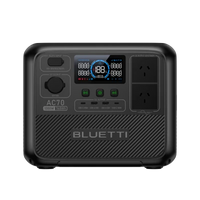
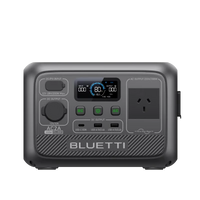
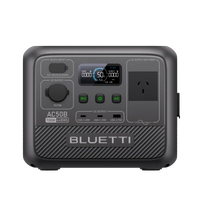

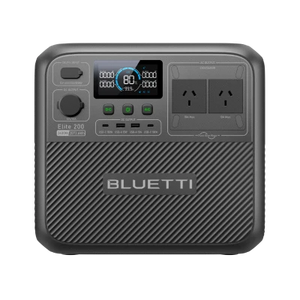
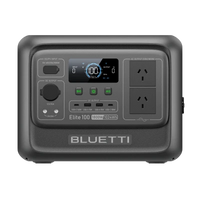
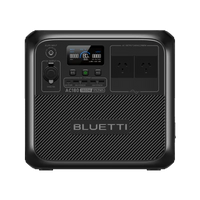
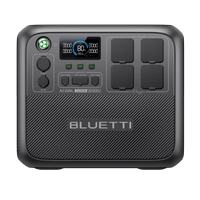
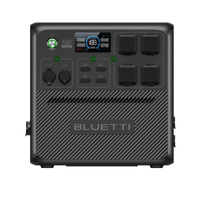
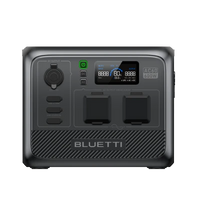
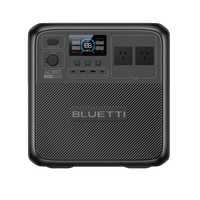


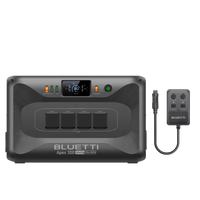

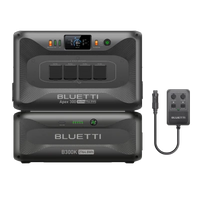
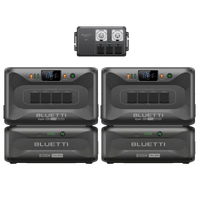
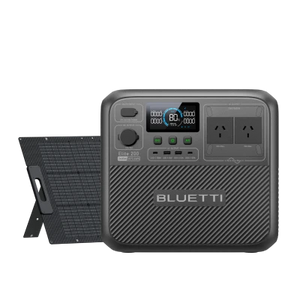
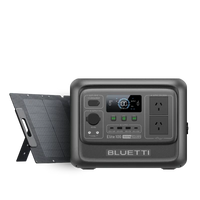
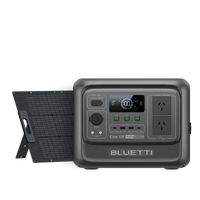
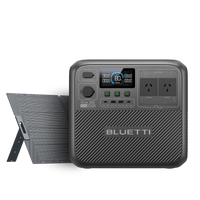
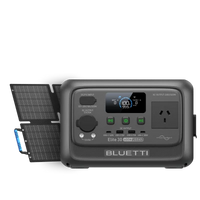
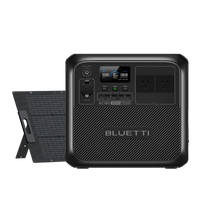
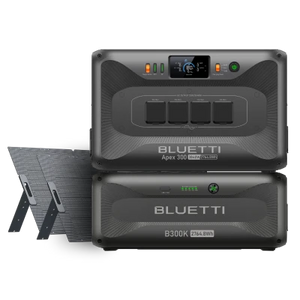
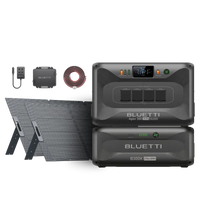
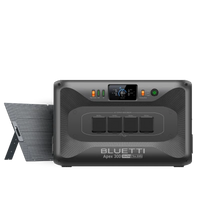
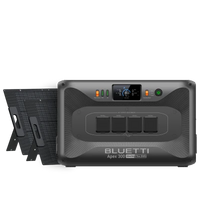
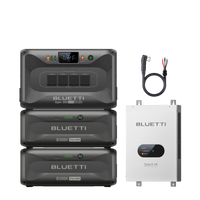

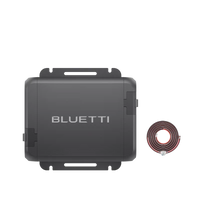
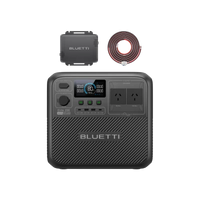
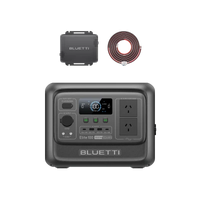
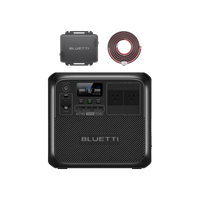
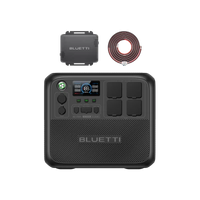
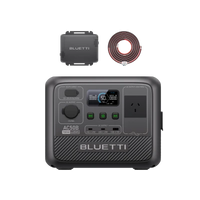
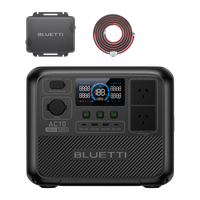


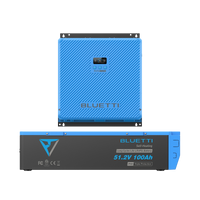
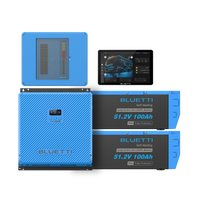
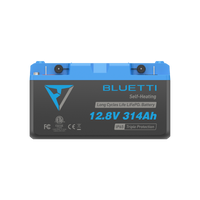
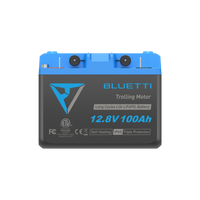
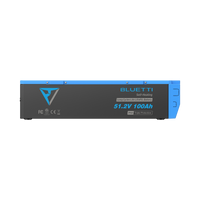
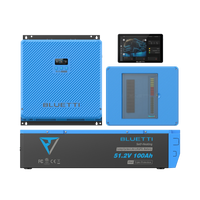
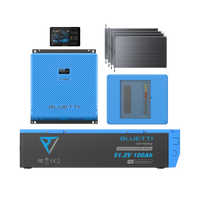
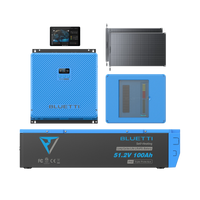
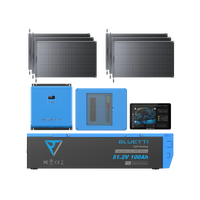




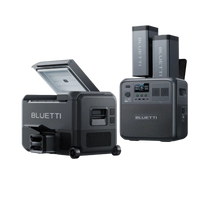
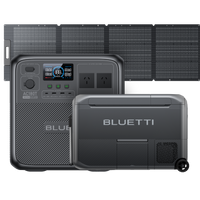
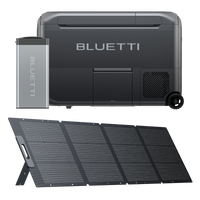
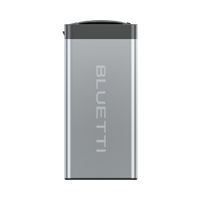

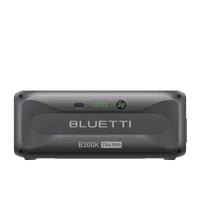

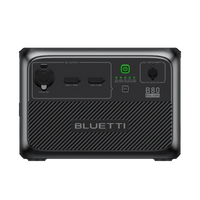
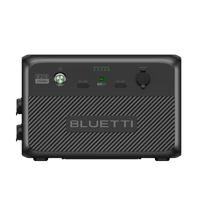

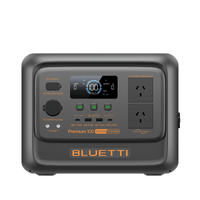
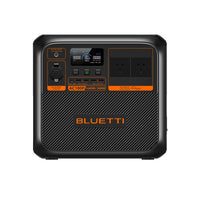

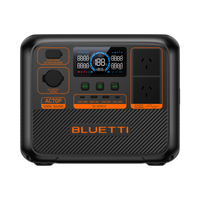
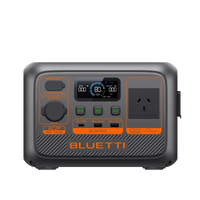
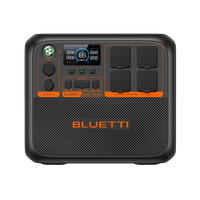
![[Phased Out] BLUETTI B80P Expansion Battery | 806Wh](http://www.bluettipower.com.au/cdn/shop/files/202310025B80P_2000-2000px_4_4caa0c1c-4dab-4272-9e9b-2b7507e5bd81.jpg?v=1713777870&width=200)
![[Phased Out] BLUETTI B210P Expansion Battery | 2,150Wh](http://www.bluettipower.com.au/cdn/shop/files/2_08cf9ef3-03a4-4489-b641-d3edb8094896.webp?v=1716016566&width=200)
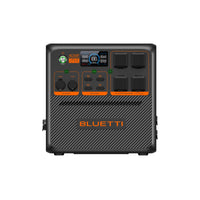
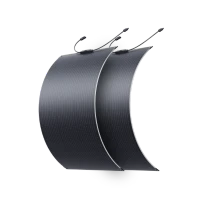
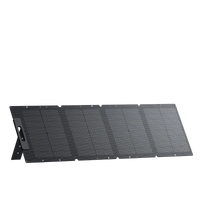
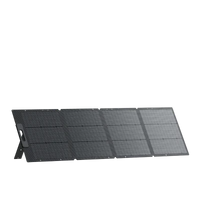
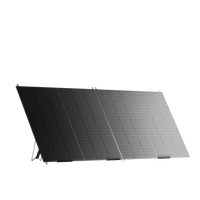

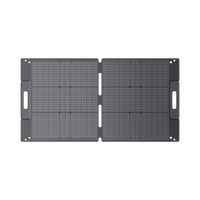

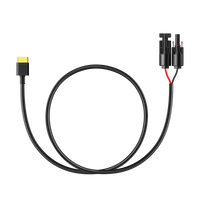
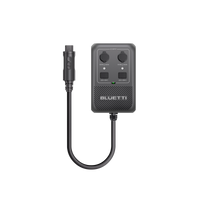
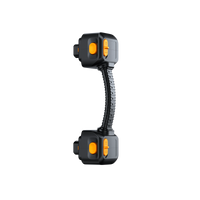

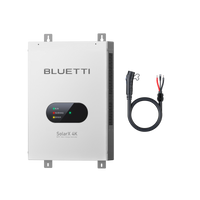
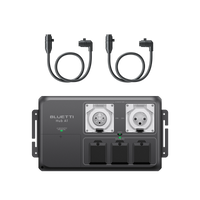
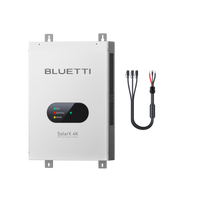
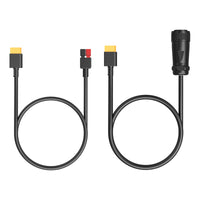
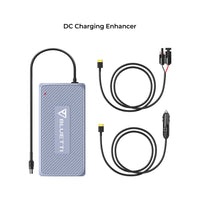

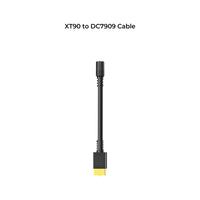
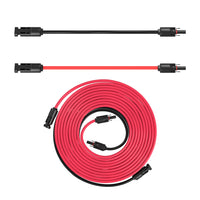
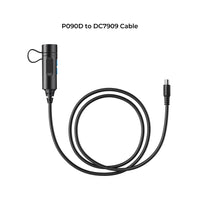
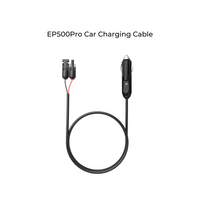
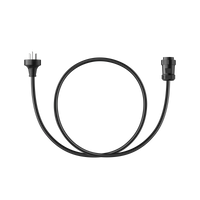
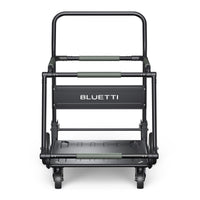
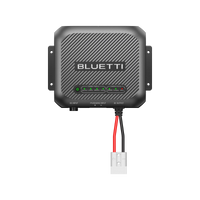
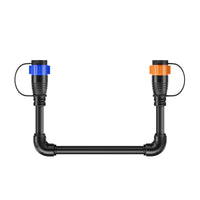



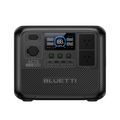
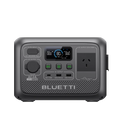
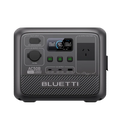


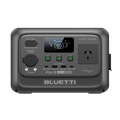
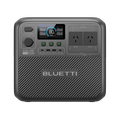
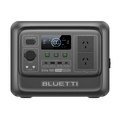
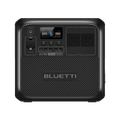
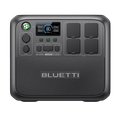
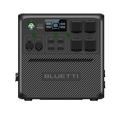
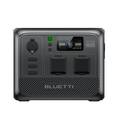
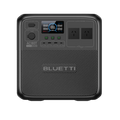


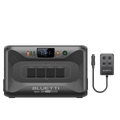

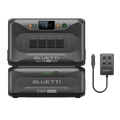
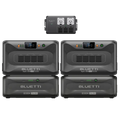




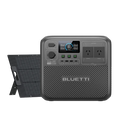
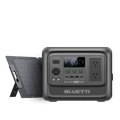
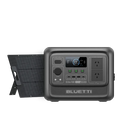
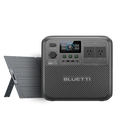
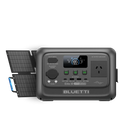
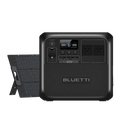
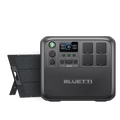
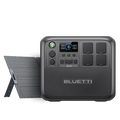




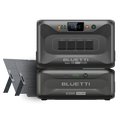

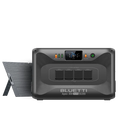
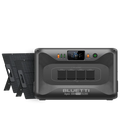
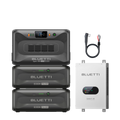







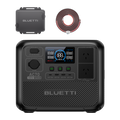
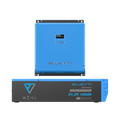

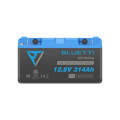
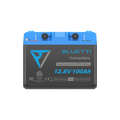

















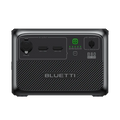
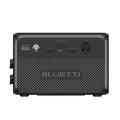


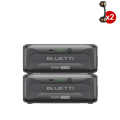
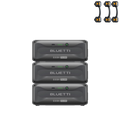




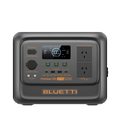
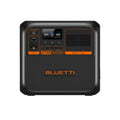


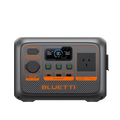

![[Phased Out] BLUETTI B80P Expansion Battery | 806Wh](http://www.bluettipower.com.au/cdn/shop/files/202310025B80P_2000-2000px_4_4caa0c1c-4dab-4272-9e9b-2b7507e5bd81.jpg?v=1713777870&width=120)
![[Phased Out] BLUETTI B210P Expansion Battery | 2,150Wh](http://www.bluettipower.com.au/cdn/shop/files/2_08cf9ef3-03a4-4489-b641-d3edb8094896.webp?v=1716016566&width=120)
